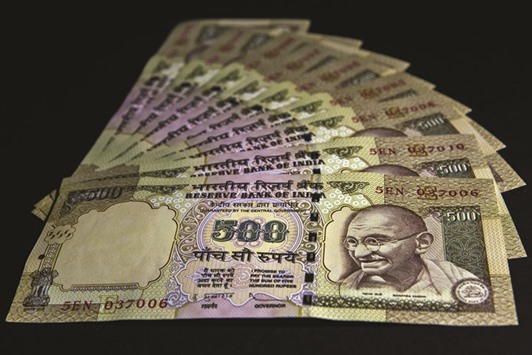UBS Group sees the rupee weakening to a record 70 per dollar by the end of the year as India battles an exports slump and the budget threatens to reignite inflation.
“India is generally considered to be a very strong story, but if you look at India’s export volumes, they’re among the poorest in emerging markets,” Bhanu Baweja, head of emerging- market cross-asset strategy at UBS said in an interview with Bloomberg TV on Monday. “So I would actually argue that this is a very expensive currency and therefore should weaken from here in a slow but steady fashion.”
The rupee climbed for a second day after Finance Minister Arun Jaitley on Monday retained the government’s target of narrowing the fiscal deficit to 3.5% of the gross domestic product in the year starting April 1. Jaitley boosted spending on a rural jobs program and proposed a new health insurance scheme, while budgeting for higher wages and military pensions. He also called for doubling farmer income in five years.
“The way it seems is if they’re going for current expenditure at the expense of capital expenditure, then they’re effectively moving the demand curve not the supply curve,” Baweja said. “And that does suggest the RBI’s inflation targets are likely to be compromised.”
The rupee rallied 0.8%, the most since September 18, to 67.8650 a dollar in Mumbai yesterday, prices from local banks compiled by Bloomberg show. It rose 0.3% on Monday.
Even so, the currency has weakened 2.5% this year in Asia’s worst performance after the South Korean won, as foreign funds pared holdings of Indian stocks by $2.6bn amid a global selloff. Baweja and his team on January 12 recommended buying the yuan versus the Indian rupee via three-month forwards.
In his 2015 outlook, published in November the year before, the strategist recommended selling Brazil’s real and stocks as one of the top trades, a call that proved prescient as the assets were among the worst performers globally.
The yield on Indian sovereign notes due January 2026 fell two basis points to 7.60%, according to prices from the central bank’s trading system. It slumped 16 basis points on Monday, the biggest drop for benchmark 10-year debt in nine months, amid bets Reserve Bank of India Governor Raghuram Rajan - who’d signalled at the last meeting that he’d watch the budget before deciding on monetary policy - will add to last year’s four interest-rate cuts.
Baweja’s views are echoed by Emkay Global Financial Services’ Dhananjay Sinha, who termed the budget “expansionary” and “stimulus oriented,” given the 12% planned year-on-year increase in overall revenue expenditure and just a 4% rise in capital spending. The central bank won’t cut rates, he wrote in a February 29 report.
The budget “will be followed by positive short-term consumption demand multiplier, higher inflation, widening in the current-account deficit, sustained tightness in liquidity and higher rates,” Sinha, Emkay’s head of institutional research in Mumbai, wrote in the report. “Hence, we do not expect RBI to follow up with further rate reduction.”
Indian exports contracted 13.6% in January, a 14th straight month of declines.
The rupee, which fell to an unprecedented 68.845 a dollar in August 2013, will end 2016 at 68.50, according to the median estimate in a Bloomberg survey.
“We think that we can get to 70 by the end of this year,” Baweja said. “And that’s one of the reasons why we are tactically short the rupee against the renminbi for instance, where we think the market has been too worried about the renminbi falling out of bed in the near term.”

The rupee rallied 0.8%, the most since September 18, to 67.8650 a dollar in Mumbai yesterday
